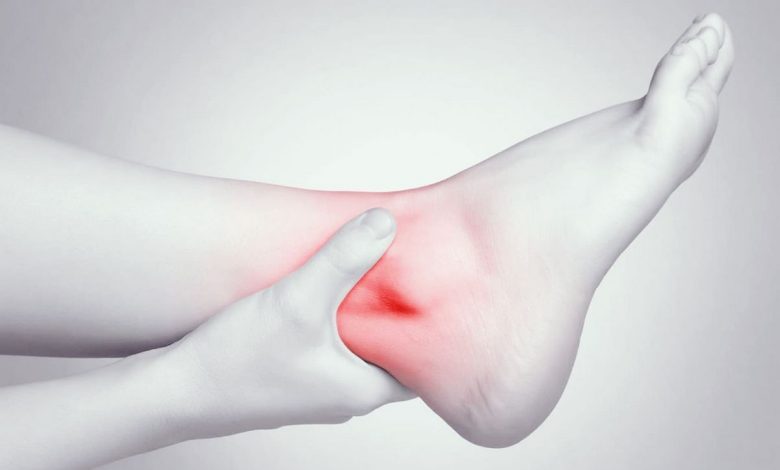Ankle pain: what is this, causes, symptoms, diagnostics, treatment, prevention

Ankle pain; Pain – ankle
Ankle pain is a common condition, to which people of all ages are exposed. It is characterized by discomfort., soreness or stiffness in the ankle and surrounding tissues. Ankle pain can range from mild to severe and can be caused by a variety of factors.. Understanding the reasons, symptoms, diagnostics, Treating and preventing ankle pain can help people cope with the condition and reduce their risk of injury in the future..
Causes of ankle pain
There are many causes of ankle pain., including injuries, stress and comorbidities. Some common reasons include:
- Stretching: sprain occurs, when bundles, connective bones of the ankle, stretch or tear. This is often the result of a sudden twist or impact on the ankle..
- Fractures: a fracture is the destruction of one of the ankle bones, which may occur as a result of a fall or direct impact.
- Tendinitis: tendinitis is an inflammation of the tendons, which are tissues, connecting muscles to ankle bones. Excessive ankle stress can lead to tendinitis.
- Arthritis. Arthritis is a chronic disease, causing joint inflammation, including ankle joint.
- Gout. Gout is a form of arthritis, caused by the accumulation of uric acid crystals in the joints, including ankle joints.
Symptoms of ankle pain
Ankle pain symptoms can vary depending on the cause., but may include:
- Pain and tenderness in the ankle joint and surrounding tissues
- Swelling and stiffness in the ankle
- Bruising or skin discoloration
- Pain when transferring body weight to the affected ankle.
- Reduced range of motion in the ankle joint
- Popping or clicking sound at the time of injury
Diagnosis of ankle pain
To diagnose the cause of ankle pain, a medical professional may conduct a physical examination of the affected area, ask about the person's symptoms and medical history, and order imaging studies, such as x-ray, MRI or computed tomography.
Ankle Pain Treatment
Treatment for ankle pain will vary depending on the cause., but may include:
- Recreation, ice and leg raises: it can help reduce swelling and pain.
- Medicines: non-steroidal anti-inflammatory drugs (NSAIDs), Taki how ibuprofen, may help reduce pain and inflammation.
- Physiotherapy: a physiotherapist can teach exercises and stretching, to improve ankle strength and flexibility.
- Surgery: in some cases, surgery may be required to repair or reconstruct the affected ligaments, tendons or bones.
Prevention of ankle pain
To reduce the risk of ankle pain, people should take the following preventive measures:
- Wear suitable shoes. Wearing shoes, which provides sufficient support and cushioning, may help reduce the risk of ankle injury.
- Warm up before physical activity. A proper warm-up can help prepare muscles and joints for activity., reducing the risk of injury.
- Strengthen the muscles around the ankle. Exercises to strengthen the muscles around the ankle can help improve stability and reduce the risk of injury..
- Avoid Excessive Workouts. Excessive stress on the ankles can lead to inflammation and injury, Therefore, it is important to properly rest and recover between physical activities..
In conclusion, ankle pain is a common condition, which may have various causes. Understanding the reasons, symptoms, diagnostics, Treating and preventing ankle pain can help people cope with the condition and reduce their risk of injury in the future.. It's always a good idea to seek medical help, if the pain does not go away or if you suspect a serious injury.
Used literature and sources
CP nail, Price MD, Sangeorzan ap. Foot and ankle pain. In: Firestein GS, Budd RC, Gabriel SE, Koretzsky GA, McInnes IB, O'Dell Jr, eds. Firestein and Kelly’s Textbook of Rheumatology. 11th ed. Philadelphia, PA: Elsevier; 2021:chap 52.
Irwin TA. Tendon injuries of the foot and ankle. In: Miller MD, Thompson SR, eds. DeLee, The sink, & Miller’s Orthopaedic Sports Medicine. 5th ed. Philadelphia, PA: Elsevier; 2020:chap 118.
Osborne MD, Esser SM. Chronic ankle instability. In: Frontera WR, Silver JK, Rizzo TD, eds. Essentials of Physical Medicine and Rehabilitation. 4th ed. Philadelphia, PA: Elsevier; 2019:chap 85.
Rose NGW, Green TJ. Ankle and foot. In: Walls RM, Hockberger RS, Gausche-Hill M, eds. Rosen’s Emergency Medicine: Concepts and Clinical Practice. 9th ed. Philadelphia, PA: Elsevier; 2018:chap 51.
Rothenburg P, Swanton E, Molloy A, Ayyer AA, Kaplan AR. Ligamentous injuries of the foot and ankle. In: Miller MD, Thompson SR, eds. DeLee, The sink, & Miller’s Orthopaedic Sports Medicine. 5th ed. Philadelphia, PA: Elsevier; 2020:chap 117.
